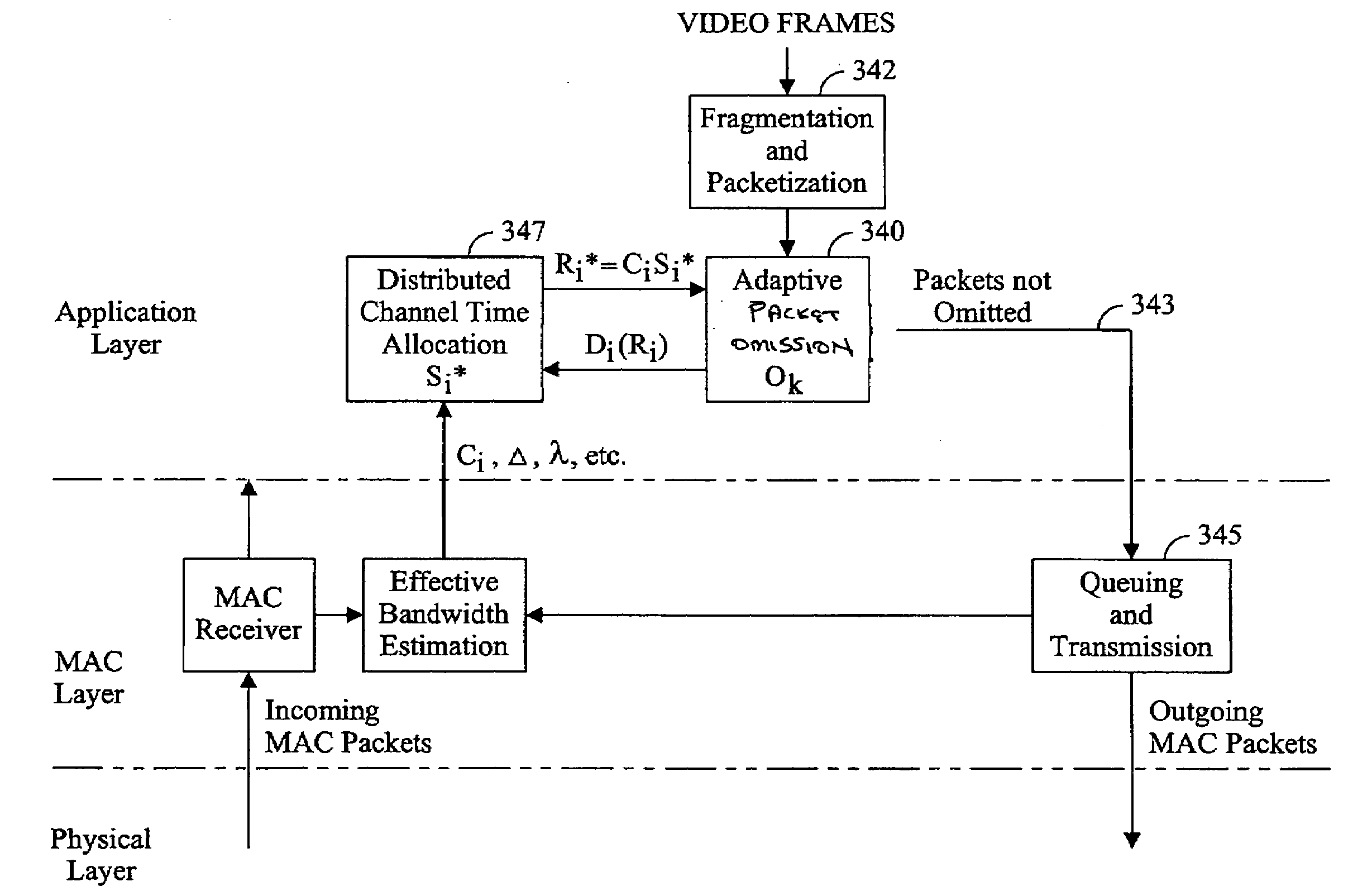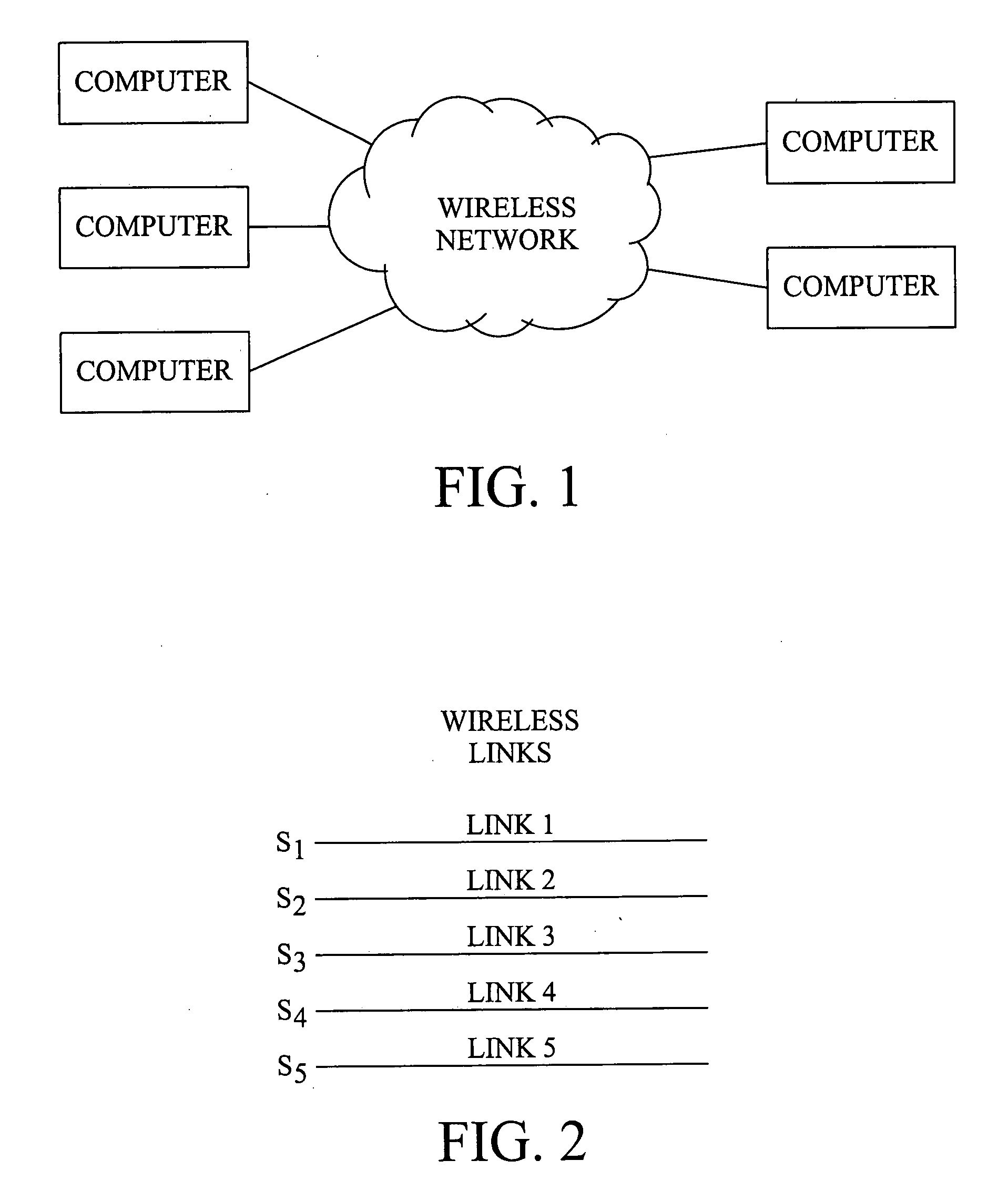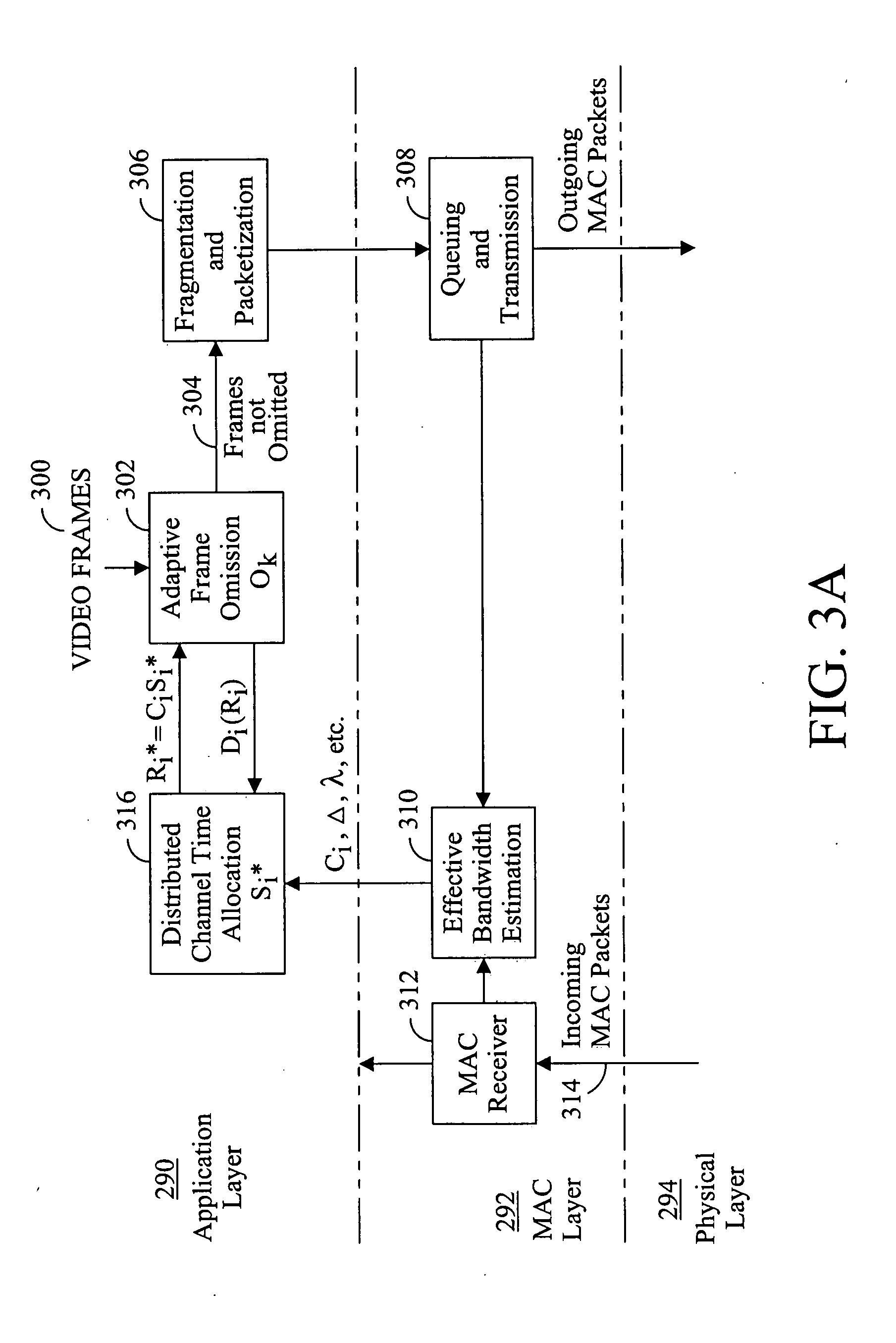Distributed channel time allocation for video streaming over wireless networks
- Summary
- Abstract
- Description
- Claims
- Application Information
AI Technical Summary
Problems solved by technology
Method used
Image
Examples
Embodiment Construction
[0021]FIG. 1 illustrates a system for transmission of multiple data streams across a wireless network that may have limited bandwidth. The system includes a plurality of computers (e.g., a transmitter and / or receiver) 210, 220, 230, 240, 250 joined together by a wireless network 260. Each of the computers may include a transmitter and / or a receiver, or may be comprised of only a transmitter and / or receiver. The input video streams may be stored on a media server, one or more of the computers, or arrive from an external source, such as a satellite television transmission, a digital video disc player, a video cassette recorder, or a cable head end. The video streams can include display data, graphics data, digital data, analog data, multimedia data, audio data and the like.
[0022]Referring to FIG. 2, when N video streams are present over the common wireless network, each is transmitted over a wireless link from one node to another node, where each wireless link has a capacity for trans...
PUM
 Login to View More
Login to View More Abstract
Description
Claims
Application Information
 Login to View More
Login to View More - R&D
- Intellectual Property
- Life Sciences
- Materials
- Tech Scout
- Unparalleled Data Quality
- Higher Quality Content
- 60% Fewer Hallucinations
Browse by: Latest US Patents, China's latest patents, Technical Efficacy Thesaurus, Application Domain, Technology Topic, Popular Technical Reports.
© 2025 PatSnap. All rights reserved.Legal|Privacy policy|Modern Slavery Act Transparency Statement|Sitemap|About US| Contact US: help@patsnap.com



